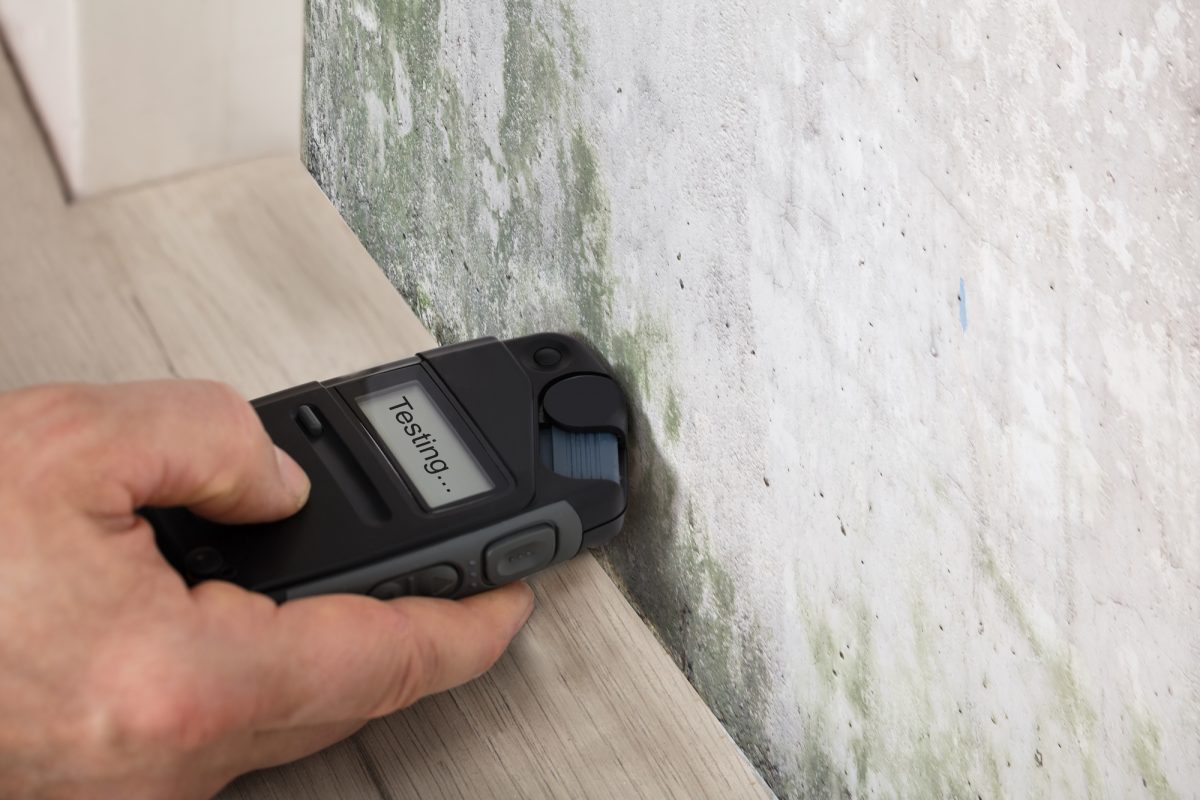
Worrying about plumbing leak you can’t find can be stressful. That’s especially true when you know that in just a few days there could be water damage costing several times more than the plumbing repair itself.
Water Lines
Signs you have a water leak include
- A damp, warm, cold, or moldy area,
- Musty odors,
- Water stains,
- The sound of hissing or dripping within walls or under the floor.
Locating the leak can be a problem, with water and dampness traveling far before surfacing as a symptom. Plus your only symptoms might be a jump in your water bill.
Visible water or a drop in pressure at a shower or sink indicates a big leak and an emergency situation that may call for shutting off the main supply to the building to avoid flooding.
But smaller leaks are nothing to ignore. They can go on for weeks or even months without any obvious problems. But it’s likely they’re progressively causing hidden damage. And can suddenly become worse at any time. Fortunately with training, experience, and the right equipment they can be tracked down quickly without making “exploration” holes in your walls, ceilings, or floors.
Leak detection services typically start with a sensitive pressure test do determine if there really is a leak. If there is indeed a problem they typically move on to any of two key technologies to pinpoint the location.
Acoustic
While simply listening can sometimes spot the problem, there are acoustic instruments that are far more sensitive and far more dependable. So it’s been used by plumbers for decades. The procedure begins by draining pipes and then pressurizing them with a safe inert gas. Escaping gas creates a sort of ultrasonic whistle above the range of human hearing. Sensitive microphones pick up the sound, amplify it, and shift it to a human-audible frequency.
Thermal Imaging
The latest in electronics has made infrared (IR) imaging a fast and economical way to zero in on leaks. It works sort of like a live video camera, but with different colors indicating different temperatures. The difference of just a small fraction of a degree becomes visible, and the biggest differences are closest to the leak. As you might expect hot-water leaks show up as warm spots. But even the cooling produced by evaporation from a damp area hidden inside a wall can be discerned.
Sewer Lines
Unlike pressurized water supply pipes, sewer lines drain by gravity flow. So leaks are likely to be intermittent. Indoors you may smell a foul odor. Outdoors you may notice a damp or particularly lush area of the lawn. But regardless it’s a big health hazard. Leaking sprinkler lines have similar symptoms, without the odor.
Since repairs can involve expensive digging and restoration it’s important to know the nature of the leak as well as its location. An in-pipe video inspection can determine both.
Natural Gas
A gas leak can cause more than a fire — in the right circumstances, it can cause an explosion. Absent that, it can pose serious health hazards. Natural gas itself is odorless, so utilities add a special odorant that smells like sulfur or rotten eggs to most people to alert you to a leak.
Any but the smallest of gas leaks should be treated as an emergency. Evacuate the area, opening windows and doors along the way. Do not turn lights or appliances on or off — that can create a spark. If it’s safe (you’re past the odor) shut off the gas main; otherwise, call the utility company or 911.
Symptoms of major leaks include smelling the odorant or hearing a hissing or whistling from a gas pipe. Signs of small leaks shouldn’t be ignored as natural gas can settle and concentrate in some areas. Signs include the following.
- Higher gas bills
- Dead house plants
- Poor appliance performance
- Personal symptoms
- Dizziness
- Headaches
- Lightheadedness
Due to the seriousness, detecting all sources and making repairs should be left to professionals plumbing companies certified for work on gas lines. As with water leaks, acoustic listening devices and thermal cameras are usually used.

 951-375-9599
951-375-9599